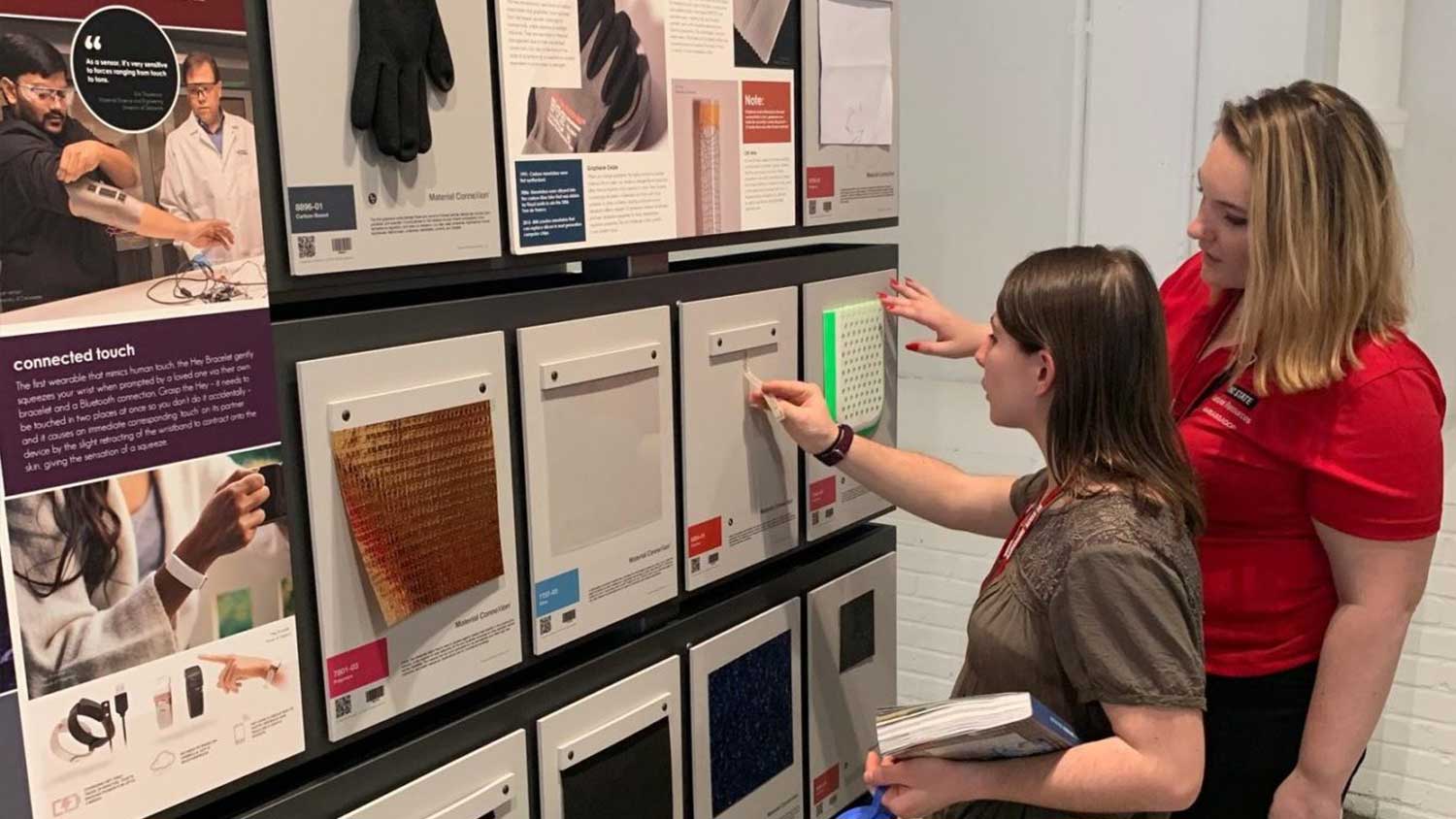Design Meets Sustainable Materials at High Point Market

Less than one hundred miles from NC State University, in High Point North Carolina, the world’s largest home furnishing show takes place twice a year, bringing over 75,000 international participants – designers, architects, executives, and buyers alike. The Market is a culmination of the latest product designs, bringing in an annual $6.73 billion, according to a report from UNC-Chapel Hill and Duke University’s Global Value Chains Center.
Sustainable Materials & Technology students, faculty, and staff attended the Spring 2019 Market and participated in a variety of curated opportunities – educational seminars, social networking, and behind-the-scenes tours. Eric Gatton, La-Z-Boy Regional Vice President of Sales gave an in depth look at the companies sustainability initiatives, emphasizing that it’s not only good business but imperative in today’s climate to understand the environmental impacts of their operations. La-Z-Boy is a member of the American Home Furnishing Alliance’s comprehensive environmental management program, EFEC which stands for Enhancing Furniture’s Environmental Culture. Senior, Christina Verdi adds “The trip reinforced our education about sustainability growing in the industry. We heard from many companies branding themselves with green & sustainable certifications.”
Student Reflections: How did High Point Market make an impact on you?
SMT student, Edward Leary said his favorite part of the trip was the Materials Lab, “which showcased counter tops made from recycled aluminum flakes and skateboard decks made of recovered fishing nets.” He also discovered an unique piece of furniture – a dining room table “made out of wood from old wooden boats that would otherwise sit in a junkyard for years and years.”
To Anna Schraufnagel an SMT major and design minor, the Market reinforced how furniture is a great intersection of her two concentrations and a possible career path.
Niambe James recounted her favorite collection of furniture was “the Glow Collection which showcased pieces made from recycled plastics!…The Glow collection uses reclaimed plastics to create functional, whimsical objects that are nostalgic of childhood elements. Each piece is carefully handmade to express the magical surrealism of memories, while honoring the need for a sustainable approach to making.”

Niambe also recalled “the group saw one collection that presented furniture made completely out of cork; metal was only used to frame the couches and I believe the tables. My SMT classes so far have taught me that wood is one of the most sustainable materials available if it is managed correctly, so it was very interesting to see how an artist was able to craft a living room set out of this sustainable resource.”
Verdi’s favorite company was Trade International- Indian Art and Furniture Place. “Their furniture was made out of reclaimed wood from boats and ceilings. When I asked one of the employees why they chose to use reclaimed wood, her response was, ‘To save the planet, keep the wood out of the landfill.’ This was great to hear because my primary reason for coming into Sustainable Materials and Technology was to help reduce waste and hearing how someone was able to make a company doing this made me very excited.”
“Sustainability has become a mandate among the buying public.” – Sustainable Furnishings Council
North Carolina based Sustainable Furnishings Council exists to help companies reduce their environmental footprints as they grow, and to help consumers find healthy furnishings as well as raise consumer interest in environmentally safe furnishings and promote the development of many more sustainable options. Students participated in GREENleaders certification courses during their visit. Student Alan Miller said “Our class with the Sustainable Furnishing Council reinforced topics our professors are covering. It was great to see people from industry emphasizing sustainability, even without a background in our area.” SFC urges the use of Life Cycle Assessment as the best method for analyzing the environmental and health impact of products and a verifiable chain of custody as the only acceptable method for tracking wood flow.

Students shared a resounding sentiment of praise and appreciation for the quality of their experiences at High Point Market. Verdi says “I hope that the market will continue to expand in the amount of sustainable pieces shown,” and James seconds with ” The showrooms change every year at the Market, so I would love to go back next year to see what new collections people come up with! As more people begin to understand renewable materials, I would like to see if there is an increase in sustainable furniture.”